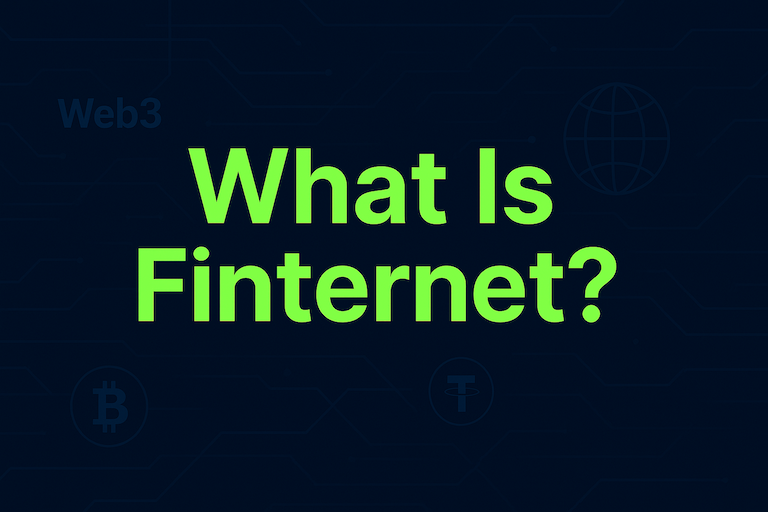A Journey Through DeFi History
Feb 7, 2025
Decentralized Finance, or DeFi, represents a transformative movement within the financial industry. By leveraging blockchain technology and smart contracts, DeFi aims to create an open and permissionless financial system. This blog post will explore the evolution of DeFi, highlighting its major milestones, key innovations, and the challenges it faces. We will delve into the foundational projects that paved the way for the current landscape, as well as the implications of this new financial paradigm for individuals and institutions alike. Join us as we take a comprehensive look at the history of DeFi and its promising future.
The Early Days of Blockchain
The inception of decentralized finance is deeply rooted in the broader history of blockchain technology. The introduction of Bitcoin in 2009 marked the beginning of a new era in digital currency, where trust was placed in mathematics rather than centralized institutions. As the first cryptocurrency, Bitcoin demonstrated the potential for a peer-to-peer electronic cash system. However, it wasn't until the launch of Ethereum in 2015 that the concept of decentralized applications (dApps) began to take shape. This pivotal moment laid the groundwork for a myriad of financial applications that would follow.
Bitcoin introduced the concept of a decentralized currency.
Ethereum enabled the development of smart contracts.
The idea of dApps emerged as a way to utilize blockchain technology.
Early projects began exploring decentralized exchanges and lending platforms.
The foundation was set for a new financial ecosystem.
The Rise of Smart Contracts
Smart contracts are self-executing contracts with the terms of the agreement directly written into code. This innovation was key to the growth of DeFi, allowing for the automation of complex financial transactions without intermediaries. By utilizing smart contracts, developers could create various financial instruments, including lending protocols, decentralized exchanges, and synthetic assets. The ability to program money fundamentally changed the way users interact with financial systems, making them more accessible and transparent. This shift marked a significant turning point in the evolution of financial services.
Smart contracts automate transactions without intermediaries.
They enable the creation of various financial instruments.
Transparency and accessibility were enhanced for users.
Developers could innovate rapidly in the DeFi space.
Trust in financial systems began to shift toward code.
The DeFi Boom
The DeFi boom began around 2020, catalyzed by a surge of interest in decentralized applications. This period saw an explosion of new projects that aimed to provide traditional financial services on the blockchain. Users flocked to platforms offering yield farming, liquidity mining, and decentralized lending, eager to take advantage of the attractive returns. The total value locked (TVL) in DeFi protocols skyrocketed, drawing attention from both retail and institutional investors. This unprecedented growth highlighted the demand for decentralized alternatives to traditional finance.
A surge of interest in decentralized applications characterized the boom.
New projects emerged to replicate traditional financial services.
Yield farming and liquidity mining became popular among users.
The total value locked in DeFi protocols reached new heights.
Institutional interest began to grow alongside retail enthusiasm.
Challenges and Risks
Despite its rapid growth, the DeFi space is not without its challenges and risks. Security vulnerabilities in smart contracts have led to significant exploits, resulting in the loss of millions of dollars. Additionally, the lack of regulation poses questions about consumer protection and market stability. The volatility of cryptocurrencies can also amplify risks for users engaging in DeFi protocols. As the ecosystem matures, addressing these challenges will be crucial for its long-term viability.
Security vulnerabilities in smart contracts have led to exploits.
Losses in the millions have raised concerns about safety.
The lack of regulation creates uncertainty for consumers.
Market volatility increases risks for participants.
Long-term success depends on addressing these challenges.
The Future of DeFi
Looking ahead, the future of DeFi appears bright but uncertain. As technology continues to evolve, we can expect further innovations that enhance user experience and security. Interoperability between different blockchain networks is likely to become more prevalent, allowing for greater liquidity and accessibility. Additionally, the integration of DeFi with traditional finance may lead to hybrid models that leverage the strengths of both systems. The ongoing development in regulatory frameworks will also play a pivotal role in shaping the future landscape of decentralized finance.
Innovations will enhance user experience and security.
Interoperability will increase liquidity across networks.
Hybrid models may emerge, combining DeFi and traditional finance.
Regulatory developments will influence the ecosystem's evolution.
The potential for global financial inclusion remains a key focus.
Conclusion
The journey through the history of DeFi illustrates the remarkable advancements in financial technology and the shift toward decentralization. From the early days of Bitcoin and Ethereum to the current DeFi boom, the space has evolved rapidly, capturing the imagination of users worldwide. While challenges remain, the potential for DeFi to revolutionize finance is undeniable. As we look to the future, the principles of transparency, accessibility, and user empowerment will likely continue to drive this dynamic landscape forward.
Start your safe cryptocurrency journey now
Fast and secure deposits and withdrawals, OSL safeguards every transaction !


